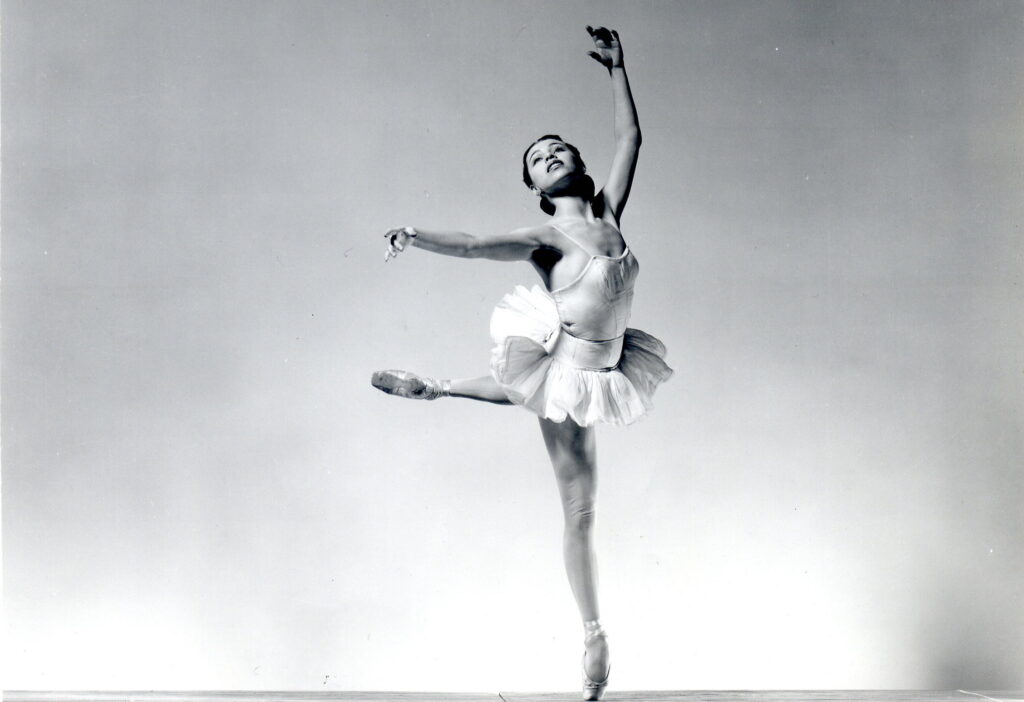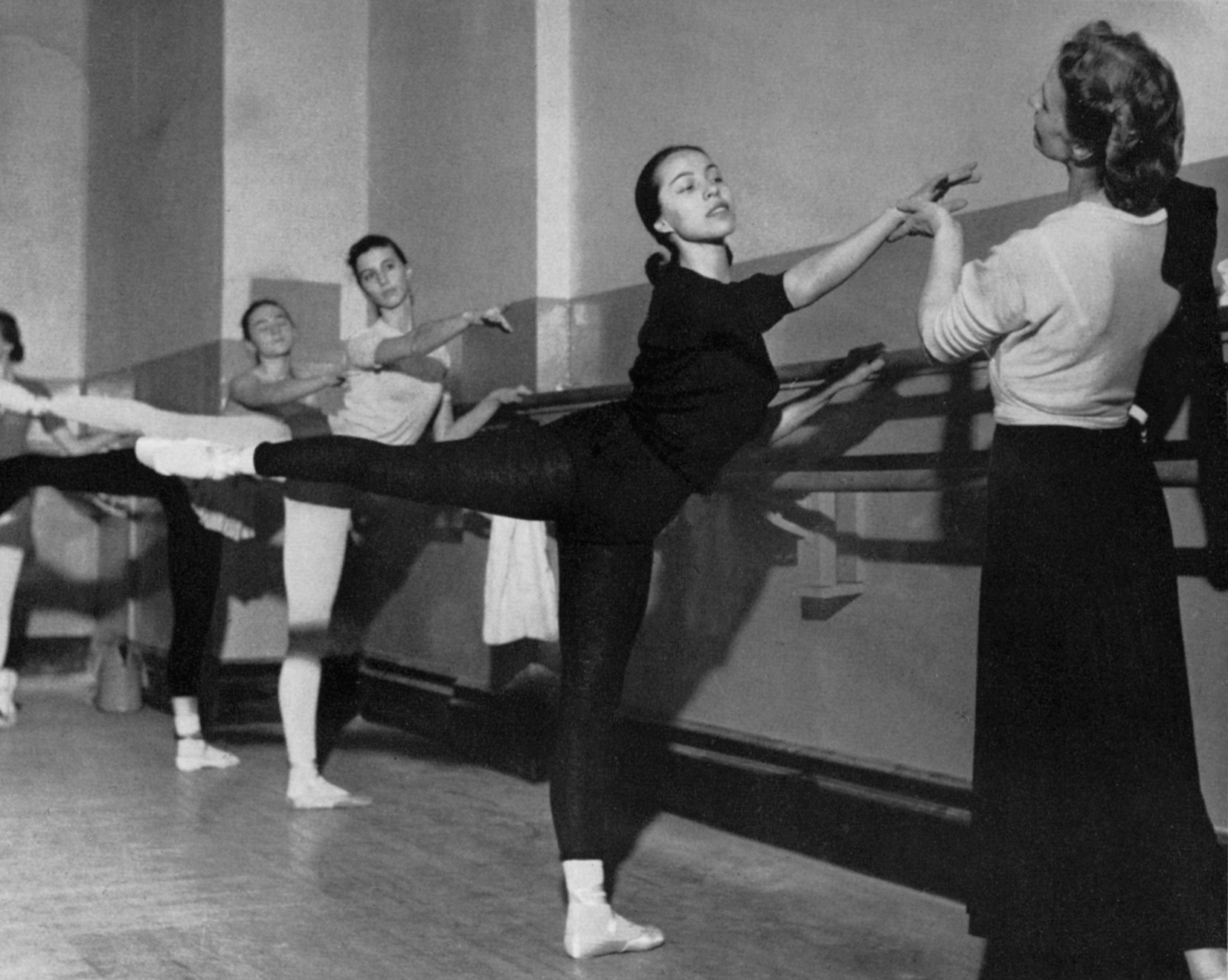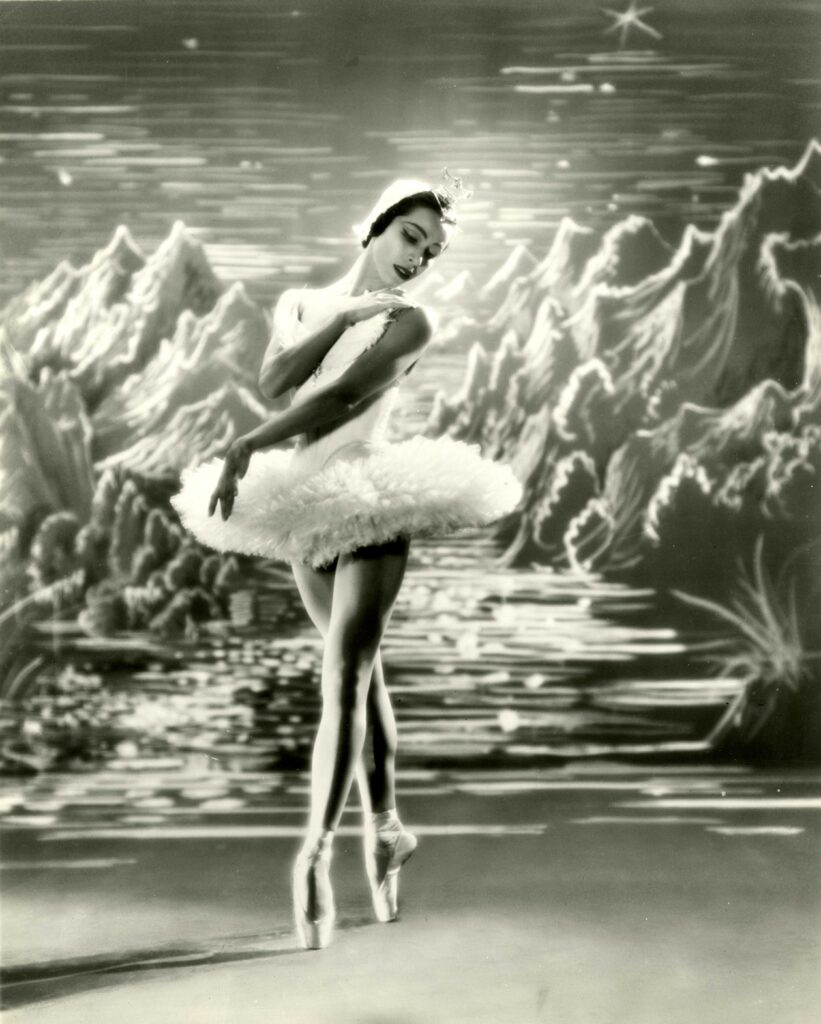March 26, 2024
#SAB90 – NYCB Debuts at New York City Center
Read the latest edition of #SAB90 to learn more about SAB's early relationship with New York City Ballet.
A member of the Osage Nation, Maria Tallchief was not only a trailblazer for Native American dancers, but is widely considered one of the country’s most influential ballerinas of all time and America’s first prima ballerina.

Maria Tallchief began her ballet training at the age of three on the Osage Indian Reservation in northern Oklahoma and continued to do so upon her family’s relocation to Los Angeles in 1933 with Ernest Belcher. At age 12, Ms. Tallchief began to train with Bronislava Nijinska – famed choreographer and former dancer with Sergei Diaghilev’s Ballet Russes – who had recently opened a studio in Los Angeles. It was under Nijinska that Ms. Tallchief decided to devote her life to ballet and at age fifteen she had the opportunity to perform at the Hollywood Bowl in a program of three short ballets staged by Nijinska.
Determined to become a dancer, she moved to New York at age 17 and first stepped into SAB’s studios in 1942 as a newly minted member of the Ballet Russe de Monte Carlo. She returned many times in subsequent years to absorb the lessons of SAB’s faculty, most notably Muriel Stuart, Anatole Oboukoff and Pierre Vladimiroff. Later, Ms. Tallchief returned as a member of SAB’s guest faculty during the 1950s and 1960s.
When one of the lead ballerinas in Ballet Russe de Monte Carlo abruptly stepped down, Ms. Tallchief was called to perform her role. Her performance received positive reviews from the top dance critics at the time, indicating to her parents that Ms. Tallchief had real potential to succeed in ballet. As her career began to take off, many tried to persuade Ms. Tallchief to change her last name to something that sounded more Russian or European. She refused.

Ms. Tallchief first worked with George Balanchine in the summer of 1944 when the entire Ballet Russe de Monte Carlo served as the dance ensemble for “Song of Norway,” a Broadway musical with choreography by Balanchine. Balanchine then served as resident choreographer for the company until 1946. Her virtuosic skill and electric energy proved a perfect match for Balanchine’s demanding works and she attributed her growth as a dancer and artist to his and Alexandra Danilova’s coaching. In 1947 she became the first American to dance with the Paris Opera Ballet, receiving rave reviews from critics, and upon her return to New York, she joined Balanchine’s newly formed Ballet Society, which was soon relaunched as New York City Ballet. Her prodigious talent quickly marked her as the Company’s de facto leading ballerina.
“From your first plié you are learning to become an artist. In every sense of the word, you are poetry in motion. And if you are fortunate enough…you are actually the music.”
—Maria Tallchief
Over the course of her 18 years with the Company, Ms. Tallchief starred in numerous NYCB productions, originating the title role in Balanchine’s Firebird, and Odette/Odile in Swan Lake, along with such exciting new ballets as Symphony in C, Orpheus and Scotch Symphony. Watch a clip of Ms. Tallchief performing Firebird at Jacobs Pillow in 1951.
In 1954 she starred as the Sugar Plum Fairy in the new production of George Balanchine’s The Nutcracker®, helping to elevate the holiday classic from relative obscurity in the U.S. into one of ballet’s most popular, annual productions.

In addition to her work with New York City Ballet, Ms. Tallchief danced on television programs, including “The Ed Sullivan Show,” and in 1952 she played Russian ballerina Anna Pavlova in the Technicolor musical “Million Dollar Mermaid,” which starred Esther Williams. In 1960, Ms. Tallchief began dancing with American Ballet Theatre, first as a guest artist and then as a lead ballerina in the company. That summer, she performed in Russia with Danish ballet sensation Erik Bruhn, making her the first American dancer to appear at the Bolshoi Theater in Moscow. She continued to dance with ABT until 1962, when she relocated to Germany, briefly becoming the lead dancer of the Hamburg Ballet.
Watch Ms. Tallchief performing the black swan pas de deux from Petipa’s Swan Lake for Presidents John F. Kennedy and Dwight D. Eisenhower during “An American Pageant of the Arts,” on November 29, 1962:
Following Ms. Tallchief’s retirement from dancing in 1965, she went on to serve as the artistic director of the Chicago Lyric Opera Ballet and the founder and artistic director of the Chicago City Ballet. For her enduring impact on American ballet, Ms. Tallchief was inducted into the National Women’s Hall of Fame in 1996, received the National Medal for the Arts in 1999, and was posthumously inducted into the National Native American Hall of Fame in 2018.
March 26, 2024
Read the latest edition of #SAB90 to learn more about SAB's early relationship with New York City Ballet.
February 26, 2024
Our new monthly series, #SAB90, we'll be sharing a short article detailing highlights of the School's history. Read our latest edition to learn about more early faculty members who laid the groundwork for the School's legacy.
January 19, 2024
Our new monthly series, #SAB90, we'll be sharing a short article detailing highlights of the School's history. Read our first edition for an overview on how SAB was first established by co-founders Lincoln Kirstein and George Balanchine.